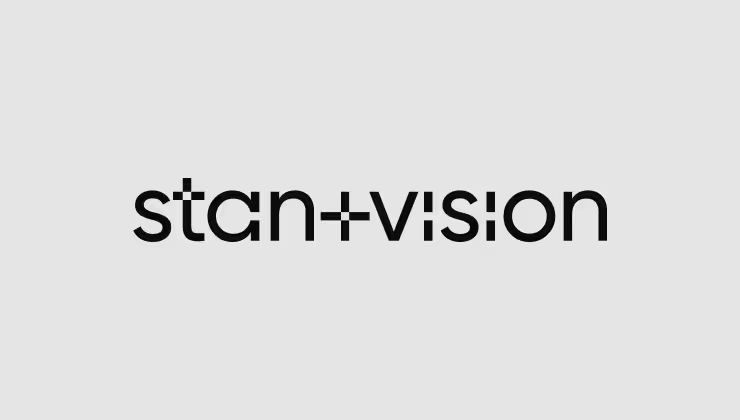In this guide, we'll explore the key aspects of a product design specification and give you a step-by-step approach to write one effectively. With our help, you'll master the art of crafting the perfect PDS to satisfy customer needs in no time.
What Is Product Design Specification?
Product design specification (PDS) is a detailed document that outlines every aspect of a product's design, functionality, and performance. This document serves as a reference and guideline for all parties involved in the development process, including designers, engineers, project managers, and stakeholders. By following the design specification, the product design agency can deliver an exceptional finished product.
The main purpose of a PDS document is to ensure that the end result meets its intended use, complies with standards and regulations, and aligns with customer expectations.
Why Is a PDS important?
A well-defined product design specification guides the product development team and ensures that everyone in the company is on the same page. But that's not the only reason why it's important.
Having a well-defined PDS document helps in the following ways:
Aligns Expectations
A Project Development System (PDS) is a helpful tool for production teams. It provides more detail and simplifies the process of figuring out what they need to create a product. This involves pinpointing the necessary skills, equipment, and materials. It also gives the team an idea of which tasks are most important, making sure resources are used efficiently.
Improves Communication
A PDS (Project Development System) serves as a communication framework for all the stakeholders involved in product development. This way, everyone knows what's expected of them and what they need to contribute.
Enhance Decision-Making
A PDS (Product Design System) offers a clear picture of the product design requirements. This helps the team make smart choices, such as spotting possible problems and coming up with a good solution to tackle them.
Ensure Product Quality Control
A well-crafted PDS (Product Development System) clearly lays out the quality standards and procedures to ensure the final product meets the necessary quality criteria.

Key Components of a Product Design Specification
When you're writing a product specification document, it's essential to keep circling back to the main question you're trying to address. Throughout the process, having quick access to the core purpose of your product and its key elements is vital for a successful product development journey.
Product Description
A thorough product description is a vital component of any Product Design Specification (PDS). It serves as a detailed roadmap, explaining what the product is, what it does, and how it works. This description ensures that everyone involved in the product design process shares a common understanding of the product's purpose and specifications.
A well-crafted product description also aids in pinpointing the product's key features, target audience, design, and functionality during the early stages of development. It neatly summarizes the product's specifics, including its size, weight, and materials.
From a marketing standpoint, a comprehensive product description plays a crucial role. It serves as a tool to showcase the product to potential customers, highlighting its unique features and benefits.
By providing a clear understanding of the product's functionality, the product design specification reduces confusion and enhances customer satisfaction.
Target Audience and User Needs
To make sure a product meets customers' expectations, it's crucial to pinpoint the target audience and grasp their requirements. This involves a market research and analysis process to determine who the product is for and what they expect from it.
Step one in identifying the product's users is to gather demographic info like age, gender, income, and education level. You can collect this data through surveys, focus groups, or market research on products with similar technology.
Once you've identified your target audience, it's vital to understand their needs and preferences.
You can achieve this through user testing, where people from your target group interact with the product and provide feedback. This feedback helps spot areas where the product may be lacking and where enhancements can be made.

Another crucial aspect of grasping user needs is considering the context in which the product will be used. For example, if the product is meant for a particular industry or environment, it's vital to comprehend the distinctive challenges and demands to develop the most suitable solutions.
Functional Aspects & Requirements
Functional requirements are the specific features and abilities a product needs to satisfy its users and achieve its intended purpose. These considerations serve as a clear set of goals and objectives for the development team.
These functional aspects can be categorized into key areas:
- User Interface: The product should have a user-friendly interface that's easy for the target audience to navigate and use intuitively.
- Performance: It should perform well under various conditions, including high traffic and heavy usage.
- Scalability: The product must be capable of growing to accommodate more users and increased usage over time.
- Security: It needs to ensure user data and privacy are well-protected.
- Compatibility: The product should work seamlessly on different devices and platforms, including mobile devices and various web browsers.
To guarantee these functional requirements are met, the design team collaborates closely with stakeholders. They identify and prioritize essential features and capabilities by gathering user feedback and examining market trends and industry standards.
Once the functional requirements are defined, the development team can establish a clear roadmap, outlining specific goals, milestones, and deadlines. This roadmap guides the team in crafting a product that meets user needs and fulfills its intended purpose.
Technical Specifications
While the importance of technical specifications may vary across industries, they often play a crucial role in any Product Design Specification (PDS).
The specifications detail the technical aspects and requirements necessary for the product to function correctly and satisfy customer expectations. It's vital for the PDS to include all relevant technical details to ensure the product concept is designed to meet these requirements.
Technical specifications typically differ based on the industry in question. For digital products, the focus often centers around the media they're presented on. This might encompass details like color profiles, formats, audio settings, and aspect ratios for images, as well as character count and structure for text.
When we create digital product design specifications for SaaS or fintech platforms, we always define these technical aspects early to avoid rework later.
Constraints and Limitations
When it comes to managing expectations, it's vital to deal with any limits and restrictions that could affect a project's outcome.
Constraints can take many forms, like a tight client budget, time constraints, or resource shortages.
Ignoring these constraints can lead to unrealistic expectations and disappointment, not just for the project team but also for stakeholders. So, it's crucial to address them upfront and incorporate them into the plan.
By acknowledging the constraints, the project team can create a realistic schedule, allocate resources properly, and set expectations accordingly in the beginning. This ensures that the project gets completed on time, within the agreed cost, and meets the satisfaction of stakeholders.
Performance Metrics
Performance metrics play a crucial role in product design specifications, ensuring that the product lives up to its quality goals, or as we call it, performance standards. Clearly defining these metrics in the product design specification is essential for delivering a top-notch product that aligns with customer expectations.
By establishing performance metrics and criteria upfront, the product design team can pinpoint and prioritize the most vital aspects of the product's performance. This means focusing on developing features and functions that matter most to the end users.
Performance metrics also help the team establish clear objectives for each feature or function, ensuring that every part of the product meets specific quality benchmarks.
Defining performance metrics and criteria also empowers the product design team to monitor and assess the product's performance during development and testing. This feedback loop provides valuable insights to enhance the product's performance and guarantee it meets the desired quality standards. B
By keeping a constant eye on the product's performance metrics, the team can spot and address any issues or defects that crop up during development, well before the product hits the market.
Benefits of Writing a Comprehensive PDS
A well-structured Product Design Specification (PDS) document provides numerous advantages that can help businesses simplify the product design process, lower risks, and enhance the final product's quality. Let's explore some key benefits of a carefully crafted PDS:
Alignment and Communication
A properly crafted PDS (Product Design Specification) makes sure that everyone involved in developing the product understands what's going on.
It document does this by clearly laying out the product's intended use, design details, and project schedules. This way, it brings all the teams and departments working on the product design together. This unity cuts down on confusion and miscommunication, making the product development smoother and more efficient.
Risk Mitigation
A detailed PDS (Product Design Specification) is like a radar for spotting possible hiccups during development. It highlights potential problems and challenges early on, giving businesses the chance to take preventive steps.
This proactive approach helps in steering clear of delays or roadblocks and ensures that the project stays on course, meeting its deadlines and budget.

Efficient Development Process
A good PDS (Product Design Specification) acts like a GPS for your project, offering a straightforward path to follow. It keeps teams on track, ensuring everyone is heading in the same direction.
By cutting down on the need to redo things and avoiding unnecessary back-and-forths, a PDS can save time and resources, making the design process run more smoothly.
Improved Collaboration
A straightforward and brief PDS (Product Design Specification) encourages teamwork and support among various teams and fields. It gives everyone a common grasp of the project's objectives, needs, and details, making team cooperation more efficient.
This collaboration often results in enhanced troubleshooting, better choices, and a more unified and coordinated development journey.
Enhanced Product Quality
A thorough PDS (Product Design Specification) plays a vital role in creating a top-notch product that aligns with the end user and their expectations. By delving into the product's requirements and design specifics, a PDS ensures the product is tailored to satisfy customer desires and preferences.
This often results in happier customers, boosted sales, and an improved reputation for the business.
Step-by-Step Guide to Writing a Product Design Specification
The important thing when crafting a product design specification is following a few key steps to make sure the final product fits the bill for your target audience and is technically doable. Here's a breakdown you can refer to:
1. Identify the Product's Purpose and Scope
Start by clearly defining what the product should achieve and its boundaries. Understand the problem it's meant to solve and nail down the specific features and functions it needs to tackle that problem.
2. Understand Your Target Audience and Their Needs
Once you've nailed down the purpose and scope, figure out who your audience is and what they need. Dig into demographics, behaviors, and preferences to ensure your product is tailored to their requirements.
3. Outline Functional and Technical Requirements
Armed with a solid grasp of purpose, scope, and your audience, it's time to list the nuts and bolts of what your product should do. Identify the specific features and functions it needs to meet your audience's needs.
Address Constraints and Limitations
There may be hurdles like budget restrictions, technical limits, or legal rules to navigate. Spot these early in the design process to ensure your end product is doable and meets all requirements.
Set Performance Metrics & Criteria
Lastly, establish the criteria for how you'll measure your product's success. Think about factors like usability, reliability, and performance. If the team can adhere to these standards early, it's easier to track progress and ensure your final product ticks all the boxes.
And don't forget, if you want to supercharge your development process and guarantee a successful finished product, consider hiring a digital product agency. They can bring valuable expertise and experience to the table.
Tips for a Clear and Effective Product Design Specification

When working on a PDS template, it's crucial to follow some key tips to ensure you create a detailed document is clear, concise, and effective:
Use Clear Language
Keep the language straightforward and avoid complex technical terms or jargon that might confuse your readers. Aim for language that your intended audience can easily grasp.
Balance Completeness and Brevity
Strive for a comprehensive yet concise PDS. While it's important to include all relevant information, don't overwhelm the reader. Utilize bullet points and tables to present data clearly and succinctly.
Organize Information Logically
Arrange your content in a logical structure that guides the reader smoothly through the detailed document. Consider using sections, sub-sections, headings, and subheadings to break up the text and make it more digestible.
Include Visuals
Visual aids such as diagrams and illustrations can enhance understanding. They're particularly useful for explaining complex ideas or offering a visual representation of the product. Ensure that any visuals you include are relevant and genuinely contribute to the document's value.
Common Mistakes to Avoid in Writing Product Design Specifications
When it comes to writing a typical PDS, there are some frequent slip-ups that can have serious consequences, potentially leading to project or product failure. Let's explore a couple of the most common mistakes in this iterative process:
Using Vague Language
One of the most significant mistakes in writing PDS is using language that is unclear or ambiguous, potentially infringing on existing patents. This can lead to misunderstandings between team members and ultimately result in a product that doesn't meet the end user's needs.
To avoid this pitfall, prioritize clear and precise language to ensure everyone on the project comprehends the requirements.
Neglecting User Needs and Requirements
Another common error is losing focus over the needs and requirements of the end users. It's absolutely critical to consider the end-users when crafting a PDS. If the product doesn't align with their needs, it's likely to struggle in the market.
To steer clear of this mistake, conduct thorough research to gather insights into the end user and their needs, requirements, and the design brief, considering real-world examples and aesthetics, before diving into the PDS.

Overlooking Technical Constraints
It's a common to overlook technical constraints when drafting a PDS. This often leads to setting unrealistic expectations and unattainable goals for the end solution.
To prevent this, it's crucial to consider technical limitations, like time and budget constraints. This ensures that the product remains feasible and can be completed within the specified boundaries.
Failure to Update and Revise as Needed
Another frequent mistake is not keeping the PDS up to date. As a project evolves, new information may emerge, and requirements might change. It's important to update and revise the PDS as necessary to ensure that everyone involved in the project has the most up-to-date and detailed information. This helps keep the project on the right track.





